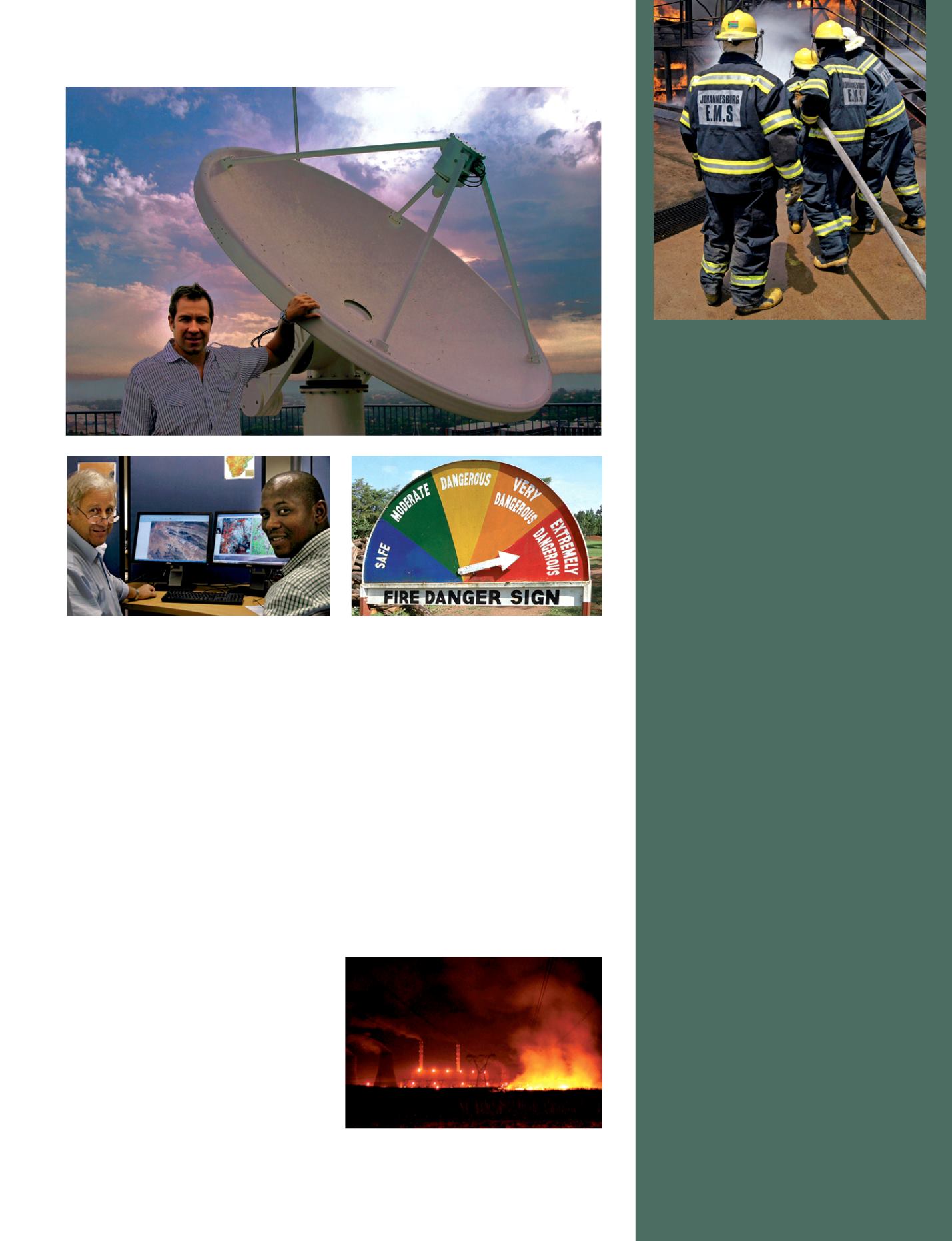
i
Top, Philip Frost, near a satellite data receiving antenna at the CSIR of Pretoria, South Africa. Bottom left,
his colleagues Bruno Meyer and Daniel Matsapola in the Satellite Application center at Hartebeesthoek.
© J.D Dallet/Suds-Concepts.
Bottom right, a fire danger billboard used to warn population.
© All rights reserved
i
The South African power company conducts
controlled burns at night to clear brush near the lines.
© Hein Vosloo/Eskom
fire products that could provide a better
understanding to countries governments
on the importance of fire management.
People cannot understand why 64% of
the country burns every year in Angola,
58% in Zambia...
We are going to produce for each country
10 years of data on a DVD with vegetation
time series, after fire time series, burned
area and give it to fire specialists with
the open source software. People will
be able to analyse all that and produce
maps and images they can show to
politicians. This will help their country
for better fire management and, globally,
adopt sustainable development policies.
More globally, concerning disaster
management, the CSIR has promoted
the data democracy initiative since
2008, under the responsibility of my
colleague Daniel Matsapola. It is based
on four pillars: data access, software and
tools, data dissemination and capacity
development. The first output of data
democracy is the Fundisa (
"
teach" in
local language) disc. It is a hard disc
containing data that we now receive free
from the USA, Japan, China and Brazil
and software that we distribute freely
to local tertiary education institutions.
We delivered 18 discs in 2012. European
participation has not yet materialised
due to budget reasons. But, for the SADC
region, data democracy is now supported
through AMESD for dissemination of
data and training.
c
Philip Frost
Senior scientist
CSIR Meraka Institute, Pretoria
South Africa
Many of the fires burning in South
Africa are caused by activities such
as harvesting of crops (sugar cane),
preparing fire breaks, burning refuse
and arson. Cultural reasons such as the
belief that good grass fires cause good
rains are especially evident in the rural
areas. Fires are also set by smoking out
bees, killing mice and poaching which is
very damaging. Now, the main users of
this information are the Parks, plantation
people and fire protection associations.
Companies like Eskom don’t have their
ownfire fighting teams. Thus, working on
fire is a government-based programwith
the idea to empower and to train people
without jobs, previously disadvantaged
communities specially, to become fire
fighters.
Training and fire fighting requires a lot
of organization. South Africa climate
ranges from Mediterranean in the
south-western corner to temperate in
the interior plateau, and subtropical
in the northeast. So we have two ‘fire
seasons’: the dry summer months in
the Western Cape, and the dry winter
months throughout the rest of the
country. Trainers and fire fighter teams
have to keep moving all the time.
The biggest thing is education about the
danger of fires. So, for communities, we
have big billboards with blue, orange
and red colours for fire danger days and
in the morning, someone sets an arrow
indicating the level of this firedanger. And
kids learn “on those days you shouldn’t
go for fire, because it’s bad”.
Ph.F
Education
and training
i
Hot fire training at the Emergency Care Training
Centre, City of Johannesburg, South Africa.
©Jan Liebenberg/Firefighter Nation
Risks - 101


